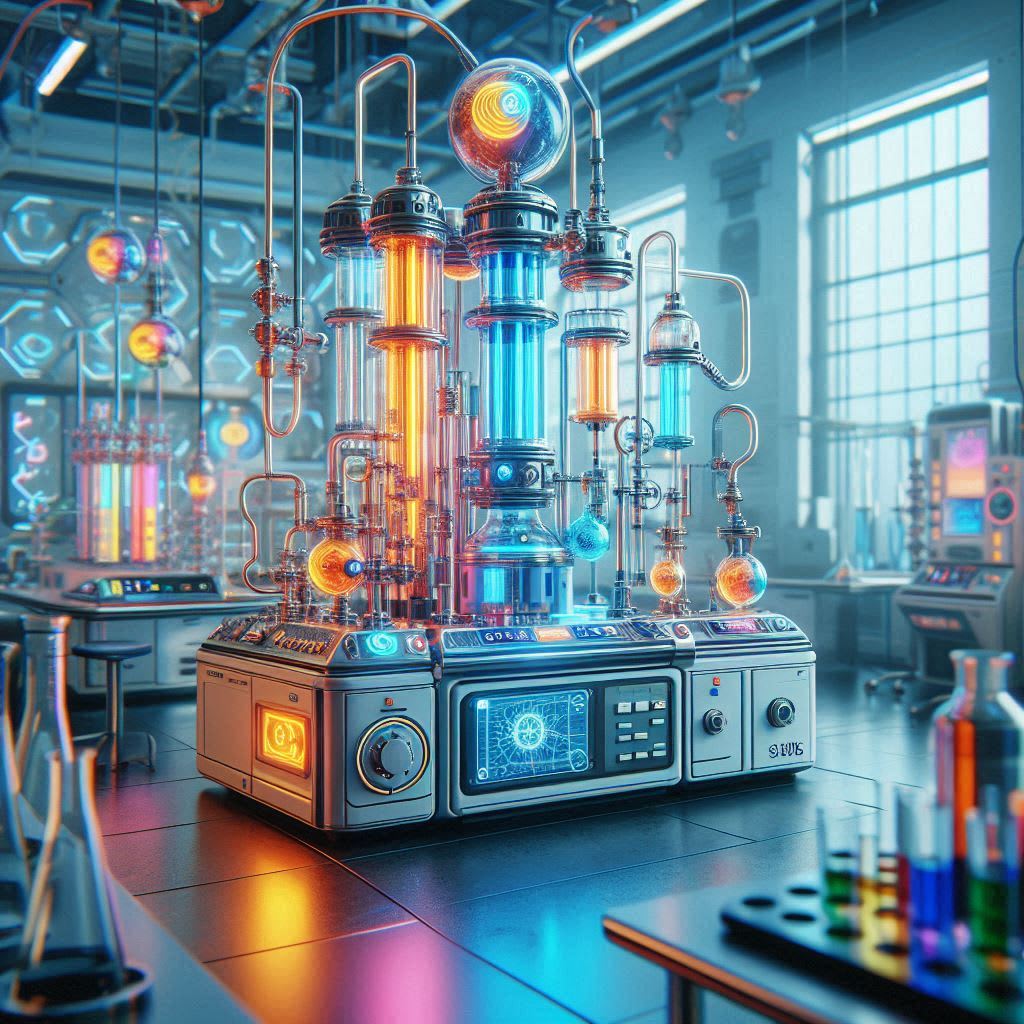Powering the Future: How Electrocatalysis is Revolutionizing Clean Fuels
From Promise to Progress: The Power of Collaboration in Responsible Electrocatalysis Development

Powering the Future: How Electrocatalysis is Revolutionizing Clean Fuels
Imagine a world where our cars hum with electricity generated from the sun, and the fuel powering them is captured carbon dioxide transformed into clean-burning energy. This isn't a utopian fantasy; it's the very near future promised by electrocatalysis, a rapidly advancing field that holds the key to sustainable transportation and a cleaner planet.
Fueling Innovation: The Three Pillars of Electrocatalysis
Electrocatalysis harnesses the power of electricity to drive chemical reactions, specifically focusing on those that create fuels. But it's not a one-size-fits-all approach. There are three main disciplines within electrocatalysis, each playing a crucial role:
- Homogeneous Catalysis: Here, the catalyst and the reactants mingle in the same phase, often a liquid solution. This method offers precise control over the reaction but can be limited by catalyst stability and reusability.
- Heterogeneous Catalysis: In this method, the catalyst is a solid material, while the reactants are typically in a liquid or gas phase. This allows for easier separation of the catalyst after the reaction, but controlling the reaction at the catalyst surface can be more challenging.
- Biological Catalysis: Nature provides inspiration with enzymes that act as biological catalysts. Researchers are exploring ways to mimic or even integrate these natural catalysts into electrocatalytic systems for a sustainable and efficient approach.
A Treasure Trove of Discoveries: Unveiling Cutting-Edge Advancements
The field of electrocatalysis is brimming with exciting discoveries. Recent research published in top scientific journals like Nature and Nature Chemistry has focused on:
Developing next-generation catalyst materials: Scientists are creating innovative materials with tailored properties for specific reactions. A promising example is the development of single-atom catalysts (SACs) where isolated metal atoms are dispersed on a support material. These SACs offer exceptional activity and selectivity due to their high utilization of active sites.
Optimizing reaction conditions using machine learning: Researchers are harnessing the power of machine learning to analyze vast datasets and predict optimal reaction conditions for specific catalysts. This allows for faster development and optimization of electrocatalytic processes.
Understanding reaction mechanisms at the atomic level: Delving deeper into the intricate details of how these reactions occur at the atomic and molecular level allows scientists to design even better catalysts and optimize reaction conditions. Techniques like in-situ spectroscopy are providing real-time insights into catalyst behavior during operation.
Beyond the Headlines: Real-World Examples and Future Implications
Electrocatalysis isn't just theoretical; it's showing promising results in real-world applications:
- Hydrogen Production: Electrocatalysis is being used to split water molecules into hydrogen gas (H2) using renewable electricity. This "green hydrogen" can then be used in fuel cells for clean transportation or stored for future energy needs. A recent breakthrough involves using sunlight-driven perovskite catalysts for efficient water splitting, potentially creating a self-contained system for clean hydrogen production.
- CO2 Conversion: Researchers are exploring ways to use electrocatalysis to convert captured carbon dioxide (CO2) into valuable fuels or chemicals. This would help mitigate climate change by removing CO2 from the atmosphere while creating new energy sources. A promising approach is the electroreduction of CO2 to methanol, a potential biofuel or fuel additive.
- Sustainable Ammonia Production: Ammonia (NH3) is a crucial fertilizer for agriculture, but its traditional production process is energy-intensive. Electrocatalysis offers a cleaner alternative for producing ammonia from nitrogen and water using renewable electricity. Recent research suggests using molybdenum-based catalysts for efficient and scalable ammonia production.
A Look Ahead: The Road to a Sustainable Future
The journey with electrocatalysis is just beginning. As research continues, we can expect even more breakthroughs that will shape the future of clean energy. Here are some exciting possibilities:
- Improved Catalyst Performance: New materials and design strategies, like single-atom catalysts and tailored nanostructures, will lead to catalysts with even higher activity, selectivity, and durability, making electrocatalytic processes more efficient and cost-effective.
- Integration with Renewable Energy Sources: Electrocatalytic systems will be seamlessly integrated with renewable energy sources like solar and wind power, creating a closed-loop system for sustainable fuel production. This integration will likely involve the development of robust and efficient solar-to-fuel conversion devices.
- Advancements in Scalability: Researchers are working on scaling up electrocatalytic processes from lab-scale to industrial applications, paving the way for widespread adoption of this technology. This will involve addressing challenges like catalyst stability and reactor design for large-scale production.
The Final Spark: Igniting a Brighter Future with Responsibility
Electrocatalysis holds immense potential for a cleaner and more sustainable future. By harnessing the power of electricity to create clean fuels, we can reduce our dependence on fossil fuels and mitigate climate change. This exciting field is a testament to human ingenuity, and its continued development promises to revolutionize the way we power our world. However, responsible development is crucial to ensure the long-term benefits of electrocatalysis.
Balancing Progress with Sustainability
While the potential of electrocatalysis is undeniable, some considerations require attention:
- Resource Depletion: Large-scale production of certain catalyst materials, particularly those using rare-earth metals, could lead to resource depletion. Researchers are actively seeking alternative materials that are abundant and sustainable.
- Environmental Impact: The life cycle of catalyst materials needs careful assessment. Manufacturing processes and potential environmental impact during operation and disposal must be optimized to minimize environmental footprint.
A Collaborative Path Forward
Addressing these challenges necessitates a collaborative approach:
- Sustainable Catalyst Development: Researchers are exploring earth-abundant elements, bio-inspired catalysts, and techniques like atomic layer deposition for precise catalyst design, minimizing environmental impact.
- Life-Cycle Assessments: Conducting thorough life-cycle assessments for electrocatalytic processes is crucial to identify and address potential environmental concerns throughout the entire life cycle, from material extraction to disposal.
The Power of Individual Action
Individuals can play a vital role in supporting the responsible development of electrocatalysis:
- Supporting Research: Look for opportunities to support research institutions and initiatives focused on clean energy solutions, particularly those exploring sustainable catalyst materials and electrocatalytic processes.
- Advocacy: Promote awareness about the potential of electrocatalysis and the importance of responsible development. Encourage policymakers to support research funding and initiatives that prioritize sustainability.
By fostering a spirit of collaboration and innovation, we can ensure that electrocatalysis becomes a powerful tool for building a sustainable future for generations to come. Together, we can harness the power of electrocatalysis to ignite a brighter future powered by clean energy.
In conclusion, electrocatalysis stands as a beacon of hope, offering a path towards a cleaner, more sustainable future. By harnessing electricity to create clean fuels, we can break free from fossil fuel dependence and mitigate the pressing issue of climate change. The advancements in this field are a testament to human ingenuity, promising to revolutionize how we power our world. However, responsible development is paramount. We must address concerns surrounding resource depletion and environmental impact through sustainable catalyst design, life-cycle assessments, and collaborative efforts. Individuals hold the power to make a difference by supporting research, advocating for clean energy solutions, and fostering a spirit of innovation. As we work together, electrocatalysis can become the spark that ignites a brighter future powered by clean energy, ensuring a sustainable tomorrow for generations to come.
About the Creator
suren arju
Hi there! I'm Suren, your startup guide. Entrepreneur, writer, dreamer - I share insights, tips & stories to fuel your startup journey. Ready to explore, learn & win together? Join me & let's redefine how we launch, learn & leap!
Enjoyed the story? Support the Creator.
Subscribe for free to receive all their stories in your feed. You could also pledge your support or give them a one-off tip, letting them know you appreciate their work.





Comments
There are no comments for this story
Be the first to respond and start the conversation.